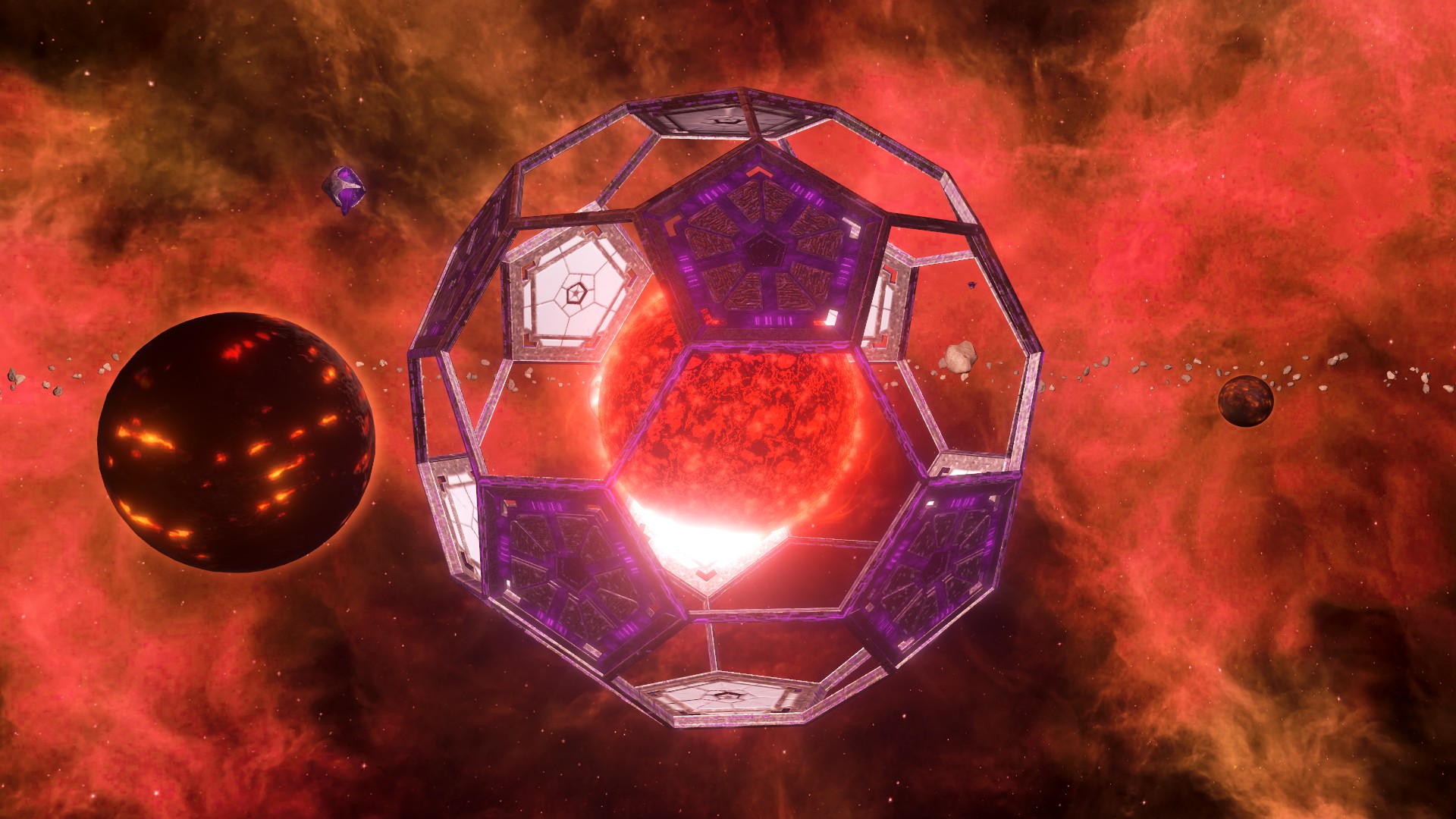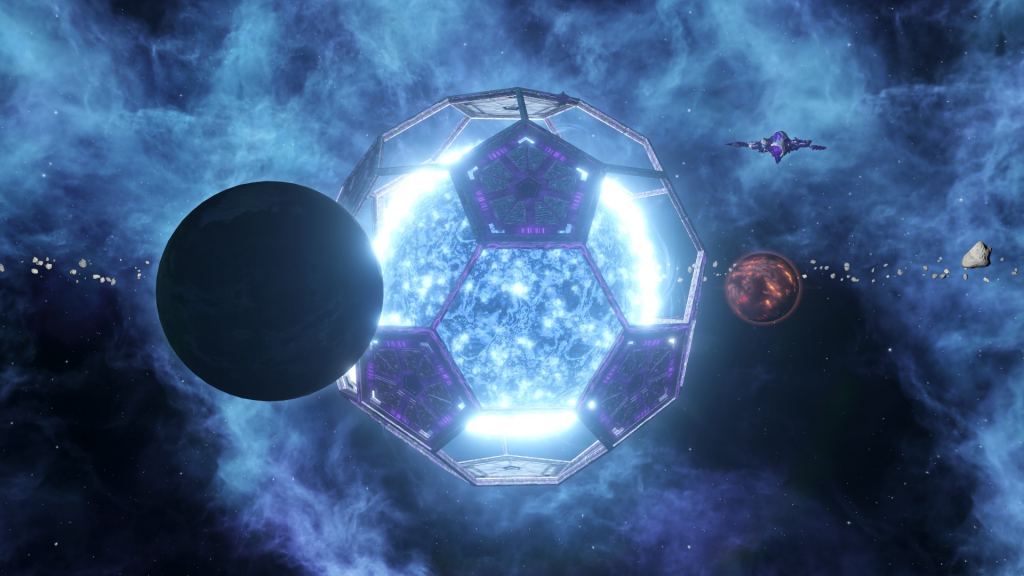If there really are advanced alien civilizations out there, you’d think they’d be easy to find. A truly powerful alien race would stride like gods among the cosmos, creating star-sized or galaxy-sized feats of engineering. So rather than analyzing exoplanet spectra or listening for faint radio messages, why not look for the remnants of celestial builds, something too large and unusual to occur naturally?
Continue reading “Those Aren't Dyson Spheres, They're HotDOGs”There’s Another, More Boring Explanation for those Dyson Sphere Candidate Stars
Dyson Spheres have been a tantalising digression in the hunt for alien intelligence. Just recently seven stars have been identified as potential candidates with most of their radiation given off in the infrared wavelengths. Potentially this is the signature of heat from a matrix of spacecraft around the star but alas, a new paper has another slightly less exciting explanation; dust obscured galaxies.
Continue reading “There’s Another, More Boring Explanation for those Dyson Sphere Candidate Stars”Astronomers are on the Hunt for Dyson Spheres

There’s something poetic about humanity’s attempt to detect other civilizations somewhere in the Milky Way’s expanse. There’s also something futile about it. But we’re not going to stop. There’s little doubt about that.
One group of scientists thinks that we may already have detected technosignatures from a technological civilization’s Dyson Spheres, but the detection is hidden in our vast troves of astronomical data.
Continue reading “Astronomers are on the Hunt for Dyson Spheres”Why Build Megastructures? Just Move Planets Around to Make Habitable Worlds
In 1960, Freeman Dyson proposed how advanced civilizations could create megastructures that enclosed their star, allowing them to harness all of their star’s energy and multiplying the habitable space they could occupy. In 2015, the astronomical community was intrigued when the star KIC 8462852 (aka. Tabby’s Star) began experiencing unexplained changes in brightness, leading some to speculate that the variations might be due to a megastructure. While the final analysis of the star’s light curve in 2018 revealed that the dimming pattern was more characteristic of dust than a solid structure, Tabby’s Star focused attention on the subject of megastructures and their associated technosignatures.
Dyson’s ideas were proposed at a time when astronomers were unaware of the abundance of exoplanets in our galaxy. The first confirmed exoplanet was not discovered until 1992, and that number has now reached 5,514! With this in mind, a team of researchers from Bangalore, India, recently released a paper that presents an alternative to the whole megastructure concept. For advanced civilizations looking for more room to expand, taking planets within their system – or capturing free-floating planets (FFP) beyond – and transferring them into the star’s circumsolar habitable zone (HZ) is a much simpler and less destructive solution.
Continue reading “Why Build Megastructures? Just Move Planets Around to Make Habitable Worlds”We Should Be Looking for Small, Hot Dyson Spheres

In 1960, legendary physicist Freeman Dyson published his seminal paper “Search for Artificial Stellar Sources of Infrared Radiation,” wherein he proposed that there could be extraterrestrial civilizations so advanced that they could build megastructures large enough to enclose their parent star. He also indicated that these “Dyson Spheres,” as they came to be known, could be detected based on the “waste heat” they emitted at mid-infrared wavelengths. To this day, infrared signatures are considered a viable technosignature in the Search for Extraterrestrial Intelligence (SETI).
So far, efforts to detect Dyson Spheres (and variation thereof) by their “waste heat” signatures have come up empty, leading some scientists to recommend tweaking the search parameters. In a new paper, astronomy and astrophysics Professor Jason T. Wright of the Center for Exoplanets and Habitable Worlds and the Penn State Extraterrestrial Intelligence Center (PSTI) recommends that SETI researchers refine the search by looking for indications of activity. In other words, he recommends looking for Dyson Spheres based on what they could be used for rather than just heat signatures.
Continue reading “We Should Be Looking for Small, Hot Dyson Spheres”The 2nd Annual Penn State SETI Symposium and the Search for Technosignatures!

From June 18th to 22nd, the Penn State Extraterrestrial Intelligence Center (PSETI) held the second annual Penn State SETI Symposium. The event saw experts from many fields and backgrounds gathering to discuss the enduring questions about SETI, the technical challenges of looking for technosignatures, its ethical and moral dimensions, and what some of the latest experiments have revealed. Some very interesting presentations examined what will be possible in the near future and the likelihood that we will find evidence of extraterrestrial intelligence.
Among them, there were some very interesting presentations by Adam Frank, Professor of Astrophysics at the University of Rochester; Ph.D. student Matias Suazo, an astrophysicist and member of Project Haephestos at the University of Uppsala; and Nicholas Siegler, the Chief Technologist of NASA’s Exoplanet Exploration Program (ExEP). These presentations addressed ongoing issues in the search for extraterrestrial intelligence (ETI), technosignatures, the role of oxygen in the evolution of complex life, and what motivations extraterrestrial civilizations (ETC) might have for creating noticeable signatures.
Continue reading “The 2nd Annual Penn State SETI Symposium and the Search for Technosignatures!”A New Way to Detect Alien Megastructures

How do you power a super advanced alien civilization? Soak up a star. We harness the power of the Sun using solar panels. What if you were to scale this idea to astronomical proportions? Surround an entire star with solar collecting structures or satellites to power your sprawling alien galactic empire. Such massive structures are known as a “megastructures” – in this case a “Dyson Sphere.” We are already trying to detect possible megastructures in space using the dimming of a star and the glow of megastructure components in infrared light. But recent research provides a new detection method – a Dyson Sphere may cause its host star to swell and cool.

Astronomy Cast Ep. 388: Megastructures
This week astronomers announced an unusual transit signal from another star. Although it’s most likely a natural phenomenon, one remote possibility is that this is some kind of alien megastructure. Freeman Dyson and others have considered this idea for decades. Today we’ll talk about the kinds of structures that aliens might want to build.



